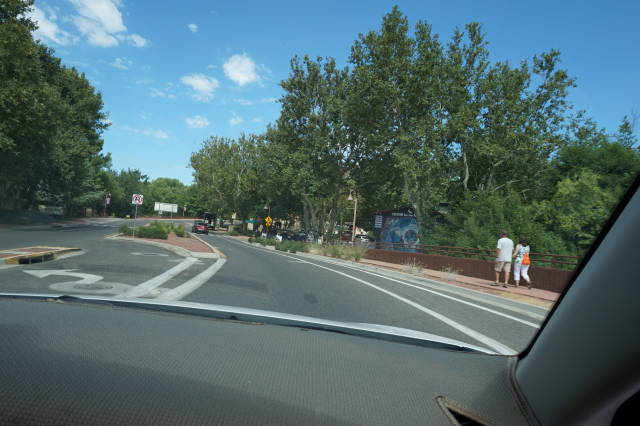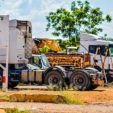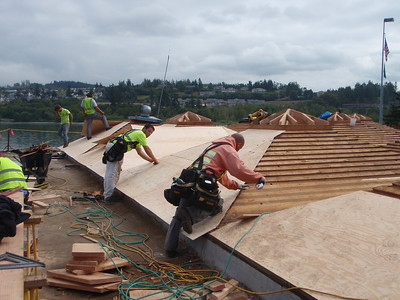Falling Tree Roof Damage – Prevention Tips

When it comes to safeguarding your roof and home, protecting your roof from falling trees should be a top priority says tree service Mesa, AZ. The consequences of neglecting this vital aspect of home maintenance can be not only costly but damage roof issues can also potentially life-threatening. In this comprehensive guide, we’ll delve into the world of proactive protection against falling trees, tree branches and sharing essential insights and actionable tips that will empower you to safeguard your home against this often-overlooked hazard of a fallen tree.
Assessing Your Vulnerability
How to Evaluate Your Property’s Risk
Assessing the risk of falling trees impacting your home begins with a thorough evaluation of your property. Here’s what you should consider:
-
Tree Proximity: Determine how close trees are to your house. Trees that overhang your roof and shingles or are too close to it pose a higher risk.
-
Tree Health: Examine the health of nearby trees. Signs of disease, decay, or instability should be a cause for concern.
-
Tree Size and Species: Larger trees and certain species are more likely to cause damage if they fall.
Identifying Tree Hazards
Identifying potential tree hazards is crucial to assessing your vulnerability. Look out for:
-
Leaning Trees: Trees that lean towards your home may be unstable and prone to falling.
-
Cracks and Splits: Visible cracks or splits in a tree’s trunk or branches are warning signs.
-
Dead or Dying Limbs: Dead or dying limbs can fall unexpectedly and cause damage.
Signs of a Weak or Unstable Tree
Recognizing the signs of a weak or unstable tree can help you take timely action:
-
Leaves and Foliage: Sparse or discolored foliage can indicate tree stress.
-
Mushroom Growth: Fungi growing on the base of a tree can signify decay.
-
Hollow Sounds: If a tree trunk sounds hollow when tapped, it may be hollow or decaying inside.
Common Causes of Falling Trees
Weather-Related Causes
Weather events like storms, heavy snowfall, and strong winds can exert immense pressure on trees, leading to falling incidents. Here’s what you need to know:
-
Storms: High winds and lightning strikes can weaken trees and make them more susceptible to falling.
-
Heavy Snow: Accumulated snow on branches can cause them to snap or bring the whole tree down.
Disease and Infestation
Tree diseases and infestations weaken their structural integrity, making them a greater risk. Keep an eye out for:
-
Tree Diseases: Infections like Dutch Elm Disease or Oak Wilt can lead to tree decline.
-
Insect Infestations: Pests like emerald ash borers can weaken trees from within.
Tree Species Prone to Falling
Certain tree species are more likely to fall during adverse conditions. These include:
-
Willow Trees: Their branches are susceptible to breaking, especially when they are waterlogged.
-
Silver Maples: These trees have brittle wood, making them prone to storm damage.
In the face of these potential dangers, it’s crucial to stay informed and proactive. Now that we’ve covered the risk factors, let’s move on to Section 2, where we’ll explore the proactive measures you can take to prevent falling tree roof damage and protect your home effectively.
Proactive Prevention Measures
Welcome to the second part of our comprehensive guide on preventing falling tree roof damage. In this section, we will explore the proactive steps you can take to ensure your home remains safe and secure from the threat of falling trees. Your commitment to these measures will go a long way in safeguarding your property and loved ones.
Essential Precautions for Tree-Roof Damage Prevention
Regular Tree Maintenance
Regular tree maintenance is the cornerstone of preventing falling tree roof damage. Consider these vital aspects:
-
Tree Pruning: Regularly trim and prune trees to remove dead or overhanging branches that threaten gutters etc. This reduces the risk of branches breaking and falling on your roof.
-
Tree Inspection: Schedule professional tree inspections to identify potential issues early on. An arborist can spot diseases, infestations, or structural weaknesses that you might miss.
-
Tree Fertilization: Properly nourished trees are less likely to become weak or diseased. Regularly fertilizing your trees can improve their health and stability.
Proper Tree Trimming and Pruning Techniques
When it comes to trimming and pruning, following the right techniques is essential:
-
Crown Thinning: Remove small, weak branches from the crown to reduce wind resistance and prevent overloading.
-
Branch Collar Cutting: Make cuts just outside the branch collar to facilitate proper healing and minimize the risk of infection.
-
Directional Pruning: Prune branches to encourage growth away from your home, reducing the risk of tree contact with your roof.
Selecting the Right Trees for Your Property
Best Tree Species for Roof Safety
Choosing the right trees for your property is a proactive step in preventing falling tree roof damage:
-
Dwarf or Small Trees: Opt for smaller tree varieties that are less likely to cause significant damage if they fall.
-
Deciduous Trees: Deciduous trees tend to be less susceptible to wind damage than evergreen trees.
-
Non-Invasive Root Systems: Avoid trees with invasive root systems that can damage your foundation.
Tree Placement Considerations
When planting new trees or relocating existing ones, consider these factors:
-
Distance from the House: Plant trees at a safe distance from your home to minimize the risk of them falling onto your roof.
-
Utility Lines: Ensure trees won’t interfere with utility lines, which can pose additional hazards.
-
Growth Potential: Research the mature size of the tree to prevent future overcrowding.
Storm Preparation and Emergency Plans
Creating a Storm Readiness Checklist
Preparation is key to minimizing damage during storms. Create a checklist that includes:
-
Secure Outdoor Items: Store or secure outdoor furniture, tools, and equipment that could become projectiles.
-
Emergency Supplies: Stock up on essentials like flashlights, batteries, and non-perishable food items.
Emergency Tree Removal Contacts
Knowing who to contact in case of an emergency is crucial:
-
Tree Removal Services: Research local tree removal services and have their contact information readily available.
-
Emergency Services: In case of immediate danger, call emergency services to secure the area.
Temporary Protective Measures During a Storm
During a storm, consider these temporary measures:
-
Tarping: If you have advance notice of a storm, consider tarping vulnerable areas of your roof to minimize water damage.
-
Safe Shelter: Ensure your family’s safety by moving to a secure location within your home during the storm.
DIY Roof Reinforcement
Reinforcing Your Roof’s Structural Integrity
Take proactive steps to strengthen your roof:
-
Roof Anchors and Straps: Install roof anchors and straps to secure the roof to the frame, reducing the risk of it lifting during strong winds.
-
Impact-Resistant Materials: Use impact-resistant roofing materials that can withstand falling debris.
Insurance and Legal Considerations
Reviewing Your Homeowner’s Insurance Policy
Understand your insurance coverage:
- Coverage for Falling Trees: Review your policy to ensure it covers falling tree damage and related expenses.
Understanding Liability in Case of Damage
Know your responsibilities:
-
Tree Ownership: Determine who is responsible for maintaining and removing trees on your property or your neighbor’s property.
-
Liability: Understand your liability in case a tree on your property damages a neighbor’s house.
As we conclude this comprehensive guide, remember that prevention is the key to protecting your home from falling tree roof damage. Regular maintenance, careful tree selection, storm preparation, and understanding your insurance coverage are all crucial aspects of safeguarding your property.
Now that you’ve completed both sections of this guide, you’re equipped with the knowledge and tools needed to minimize the risk and impact of falling trees on your home. Stay proactive and ensure the safety of your home and loved ones.



